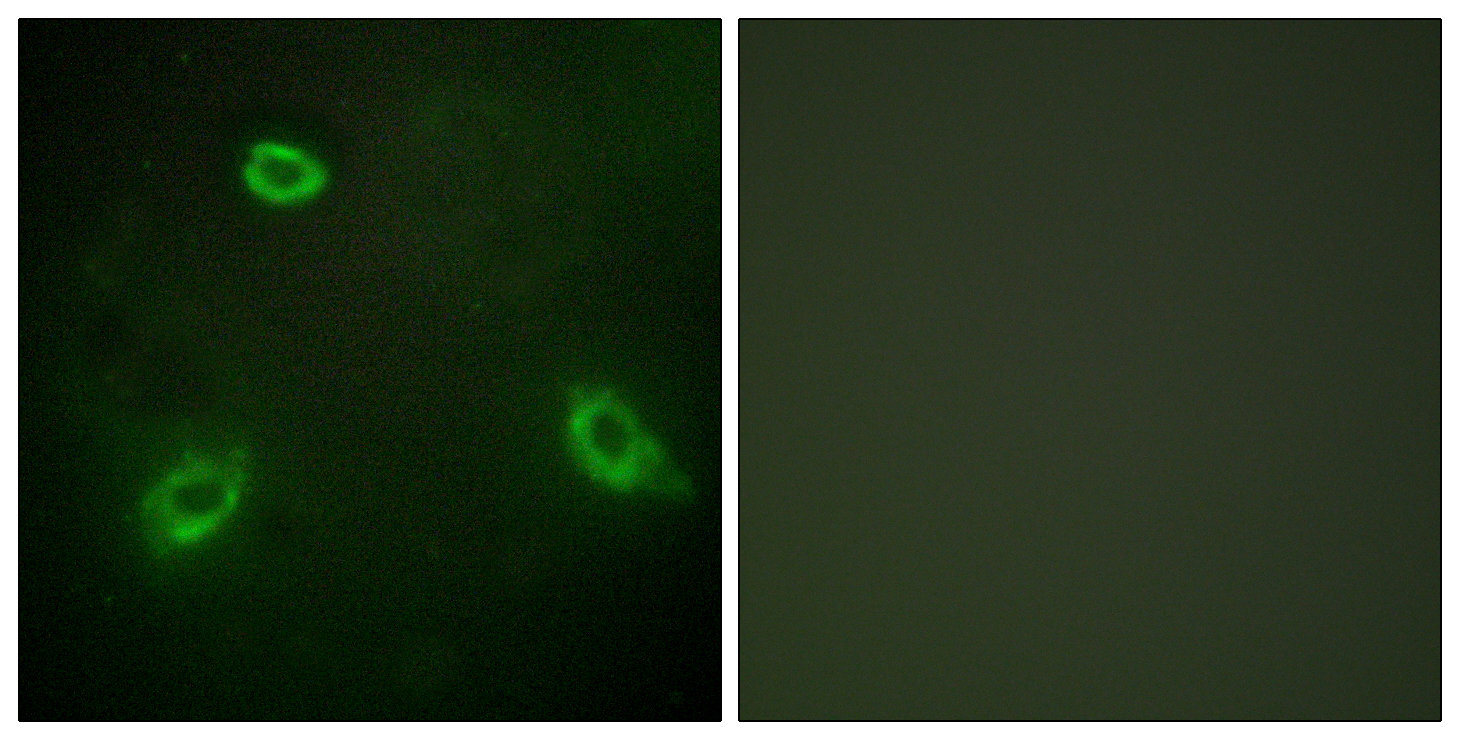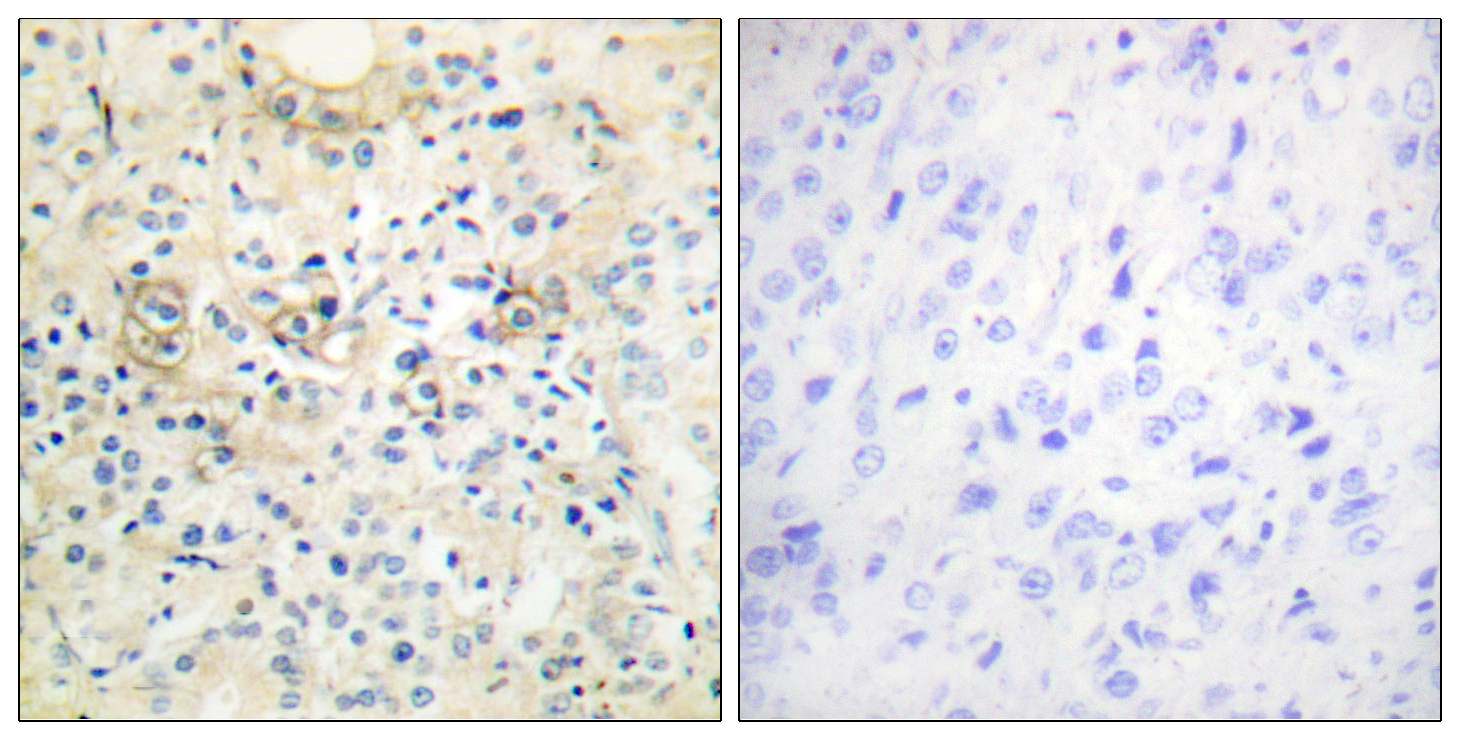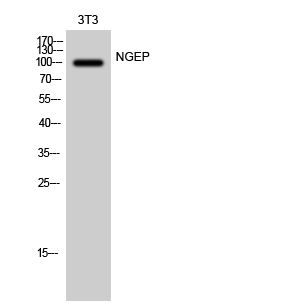产品名称
NGEP Rabbit Polyclonal Antibody
别名
ANO7; NGEP; PCANAP5; TMEM16G; Anoctamin-7; Dresden transmembrane protein of the prostate; D-TMPP; IPCA-5; New gene expressed in prostate; Prostate cancer-associated protein 5; Transmembrane protein 16G
存储缓冲液
Liquid in PBS containing 50% glycerol, 0.5% BSA and 0.02% New type preservative N.
Human Gene Link
http://www.ncbi.nlm.nih.gov/sites/entrez?db=gene&term=50636
Human Swissprot No.
Q6IWH7
Human Swissprot Link
http://www.uniprot.org/uniprotkb/Q6IWH7/entry
Mouse Swissprot No.
Q14AT5
Mouse Swissprot Link
http://www.uniprot.org/uniprot/Q14AT5
免疫原
The antiserum was produced against synthesized peptide derived from human TM16G. AA range:881-930
特异性
NGEP Polyclonal Antibody detects endogenous levels of NGEP protein.
稀释度
WB 1:500 - 1:2000. IHC 1:100 - 1:300. IF 1:200 - 1:1000. ELISA: 1:20000. Not yet tested in other applications.
宿主
Polyclonal, Rabbit,IgG
背景介绍
This prostate-specific gene encodes a cytoplasmic protein, as well as a polytopic membrane protein which may serve as a target in prostate cancer diagnosis and immunotherapy. Alternative splicing results in multiple transcript variants encoding different isoforms. [provided by RefSeq, Aug 2011],
组织表达
Specifically expressed in epithelial cells of the prostate (at protein level).
细胞定位
[Isoform 1]: Cell membrane ; Multi-pass membrane protein . Cell junction . Endoplasmic reticulum . Concentrates at sites of cell-cell contact (PubMed:17308099). Shows an intracellular localization according to PubMed:22075693 and PubMed:20056604. .; [Isoform 2]: Cytoplasm, cytosol .
功能
caution:It is uncertain whether Met-1 or Met-55 is the initiator.,function:May act as a calcium-activated chloride channel. May play a role in cell-cell interactions.,induction:Up-regulated by androgen.,similarity:Belongs to the anoctamin family.,subcellular location:Concentrates at sites of cell-cell contact.,tissue specificity:Specifically expressed in epithelial cells of the prostate (at protein level).,
纯化
The antibody was affinity-purified from rabbit antiserum by affinity-chromatography using epitope-specific immunogen.



